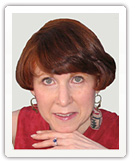e-Tips
HAS THE MISSING PIECE ELUDED YOU? – Find the Inter-generational Solution
Generational differences in attitudes inform and influence attitudes and behaviors toward all the other types of diversity and individuals’ worldviews. They are integral, “joined at the hip,” so to speak.
- If you are approaching attracting and retaining clients of different generations all the same way
- If you are approaching attracting and retaining employees of different generations all the same way
- If you are pitching your fundraising, member drives and engaging alumni of different generations all the same way
- If you think the members of multi-generational teams all have similar wants and expectations
- If knowledge transfer among generations has more speed bumps than fast lanes
then you are missing the piece that makes the ultimate difference to your long-term success rate.
Most firms treat different types of diversity as separate silos and approach their programs as if one solution fits all and will make the crucial emotional connection that is necessary for attitude and behavior change and cultural transformation.
In the last several years, many organizations have realized that something different is going on and not going away, and their personnel need to learn about generational differences. Usually they bring in a speaker (sometimes that’s me) for an hour or so to explain the basics– and then check off the box that they addressed the issues.
It’s a good first step…but for real change to occur deepening understanding, repetition and practice is necessary. Savvy organizations are undertaking yearlong or longer initiatives and community building to address inter-generational challenges locally or globally, as relevant. That type of dedicated effort will earn them an advantage in recruiting and retaining both engaged employees and loyal clients/customers.
IBM and American Express have realized how central inter-generational initiatives are to productivity in their core businesses. IBM is leveraging learning resources and building employee communities in person and online in many countries to strengthen collaboration. With surveys and other means, IBM is assessing what different generations need and is providing recommendations to business units globally on attracting, developing and retaining talent of different generations. American Express, realizing that its shift in business strategy away from travel to financial services and other technology-oriented businesses required younger demographics, also has been focusing on inter-generational challenges.
Educational institutions are getting sensitive to the large demographic changes as at least a third of their faculty and administrative staff heads toward retirement age. For example, Cornell University’s Alumni Affairs & Development department, having done some generational programming in the past, is starting on a yearlong generational focus as one of its diversity initiatives required of all colleges and administrative units by the University.
Some of the strategies to include in your cross-generational diversity initiatives are:
- Small facilitated group discussions
- Educational materials and interactive courses appropriate to different markets
- Mutual and reverse mentoring and mentoring circles
- Significant roles for senior management as advocates and participants
- Knowledge transfer and succession strategies
As firms, other organizations and institutions develop affinity or employee resource groups (ERGs) or business resource groups (BRGs) and other internal and cross-cultural communities, they need to be sure to cross-pollinate them. Just as gender diversity groups focused on furthering women’s careers and as leaders greatly benefit from bringing men into the conversation, diversity and inclusion initiatives for each specific focus need to bring all the generations into the conversation. Cross-generational conversations will facilitate understanding of all the views and attitudes that must be part of the solution and the pursuit of harmonious change.
Instead of “siloing,” make the cross-generational perspective the foundation piece.
Please share your thoughts. Send comments to pwhaserot@pdcounsel.com or share on the Cross-Generational Conversation group on LinkedIn.
Phyllis
© Phyllis Weiss Haserot, 2014. All rights reserved.
* The generational chronology for easy reference: Generations are defined by the similar formative influences – social, cultural, political, economic – that existed as the individuals of particular birth cohorts were growing up. Given that premise, the age breakdowns for each of the four generations currently in the workplace are approximately:
Traditionalists: born 1925-1942
Baby Boomers born 1943-1962
Generation X born 1963-1978
Generation Y/Millennials born 1979-1998
Struggling with how to achieve vital knowledge transfer among the generations? Ask about our workshop “Avoiding the Cliff: the Human Side of Succession Planning and Knowledge Transfer”
For coaching, training and special programs on inter-generational challenges for and among 4 generations in the workplace, attracting and retaining clients and employees of different generations, and maximizing the potential of young professionals and work teams, call or email Phyllis for an exploratory talk or complimentary coaching session at 212-593-1549 or pwhaserot@pdcounsel.com. Ask about our signature program *Frontrunner 5.”
Phyllis is available to speak at your organization or at firm retreats on inter-generational relations and organizational effectiveness topics. Call or e-mail for a list of topics or to custom-tailor your own.

